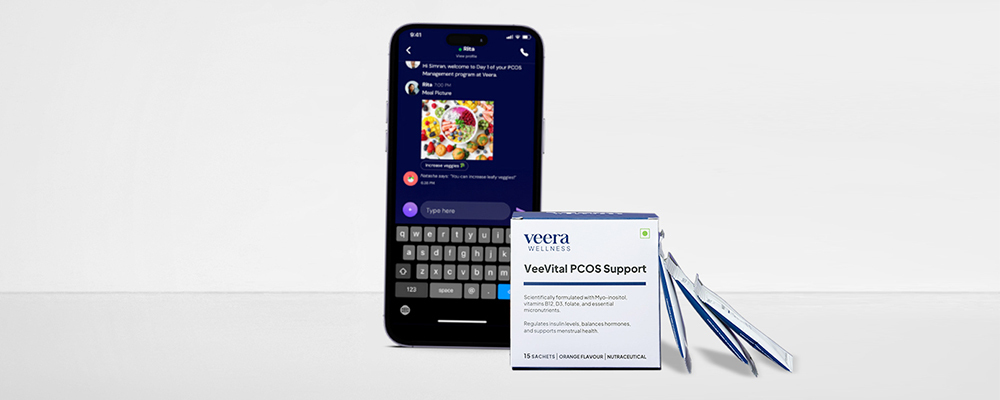There are several hormonal disorders common among women of reproductive age, but polycystic ovary syndrome is one of the most common. Symptoms of PCOS include irregular menstrual cycles and excess male hormones (androgens). Ovaries may produce many small collections of fluid (follicles) and fail to release eggs regularly.
There is no known cause of PCOS. It is possible to reduce the risk of long-term complications such as type 2 diabetes and heart disease with early diagnosis and treatment along with weight loss.
How to Work out with PCOS:
Women with PCOS may find it difficult to engage in regular physical activity due to the multiple symptoms it presents. You can incorporate physical activity into your routine and make it fun by adopting the right mindset and getting the right information! Taking up fitness regimens that are difficult to maintain over long periods of time can be a chore for many women who suffer from PCOS. For the best PCOS exercise, you should choose a routine that you enjoy and that you enjoy doing every day!
PCOS Exercise Plan:
- Steady-state cardiovascular workouts:
When engaging in moderate exercise, these workouts usually involve getting your heart pumping at about 50 to 70 percent of your maximum heart rate. This category includes aerobic exercises such as walking, biking, dancing, and taking aerobic classes.
- HIIT workouts:
An intensive exercise burst is balanced with a rest interval during high-intensity interval training (HIIT). Mountain climbers, burpees, and tuck jumps are all common exercises in HIIT workouts.
- Mind-body exercises:
Women with PCOS have a more intense response to stress and distress than women without PCOS. It is not only possible to burn calories with mind-body exercises such as yoga, Pilates, and tai chi, but it is also possible to reduce stress levels, which worsen the symptoms of PCOS.
- Strength training:
A strength training program involves lifting weights or resistance bands to build muscle. Building healthy muscles and bones is possible with this type of training. By increasing your muscle mass, you can burn more calories while at rest, which will help you stay fit.
Core Strengthening Exercises:
You use your core to accomplish a lot of everyday tasks, like pushing a grocery cart or putting on shoes. You will also notice a difference in your balance, posture, and stability as a result. Core muscles are not just abdominal muscles, as is commonly believed. Additionally, it includes muscles surrounding your pelvis and back. How do you know if you’re actually tightening your core when you see the phrase “tighten your core” throughout these exercises?
Start by inhaling, and as you do so, imagine that your belly button is bringing your spine closer. Take a few seconds to hold that position. The feeling of braced stomach muscles is what your core feels like when you engage it.
Strengthening Exercises:
Any activity that makes your muscles work harder than usual is a strength exercise. The result is an increase in strength, size, power, and endurance of your muscles. In these activities, you either use your body weight to perform the exercise or work against resistance. If you want to strengthen your muscles, you should do at least two sessions a week. Examples of muscle-strengthening activities include:
- Lifting weights or working with resistance bands
- Climbing stairs
- Hillwalking
- Cycling
- Dance
- Push-ups, sit-ups, and squats
- Yoga
Cardio Workouts:
Exercise that raises your heart rate into your target heart rate zone is called cardio exercise, sometimes referred to as aerobic exercise. Fat and calories are burned most efficiently in this zone. A variety of cardio exercises are common, such as walking, cycling, and swimming. Nevertheless, household chores like vacuuming and mopping can be considered cardio exercises.
Cardio differs from other types of exercise in that it relies on your body’s ability to utilize oxygen during the workout. There are several factors that can affect a person’s cardio ability or capacity.
High-intensity interval training:
It’s easy to recognize that high-intensity interval training (HIIT) is a challenging exercise. You push your pace outside of your comfort zone, taking your cardio workout to the next level. HIIT can be used with any cardio workout, including running, rowing, and jumping rope. The intensity of the workout will increase quickly as you back off for a slower period of recovery, followed by another round of high-intensity workouts.
With that strategy, you can save time by working out less than if you kept a steady pace. Your metabolism will be boosted, you’ll lose weight, and you’ll build muscle. A bonus is that your body will burn calories for about two hours following an exercise session.
Mind-Body Exercises:
It is possible to control your body’s physical responses by using your thoughts, thereby reducing stress. Your body and mind tend to relax if you recall a time when you were happy, grateful, or calm. Researchers have found that when you imagine an event, you often experience the same feelings as you do when it actually occurs. Your heart may beat faster, your hands may become cold and clammy, and your hands may sweat if you recall an upsetting or frightening experience. In order to maximize your mind-body connection’s healing effects, whether you are preparing for surgery or have been diagnosed with an illness, it is essential to minimize their negative effects.
How Much Time Should I Exercise?
You can generally improve the quality of your life, prevent serious diseases, and even extend your life expectancy by exercising regularly. This treatment, in addition to treating PCOS symptoms, also reduces the risk of long-term complications, such as infertility, heart problems, and diabetes.
The blood sugar levels of people with insulin resistance and cardiovascular problems will be affected by at least 120 minutes of good, rigorous exercise per week. A moderate to a high-impact exercise program can also significantly benefit women suffering from PCOS, according to experts.
You can benefit from any type of exercise if you have PCOS, including cycling, swimming, and light jogging.
Conclusion:
You may feel overwhelmed by all this talk about exercising regularly if you aren’t very active at the moment. Fortunately, you don’t need to start doing military fitness exercises to see results. The benefits of some exercise outweigh the benefits of none, even if it is only a quick ten-minute walk. Moving more in your daily life is another simple way to boost your activity level. PCOS patients should incorporate movement into their daily routine to maintain a healthy body and mind. The symptoms of PCOS can be relieved with exercise, even though it won’t cure it.


















